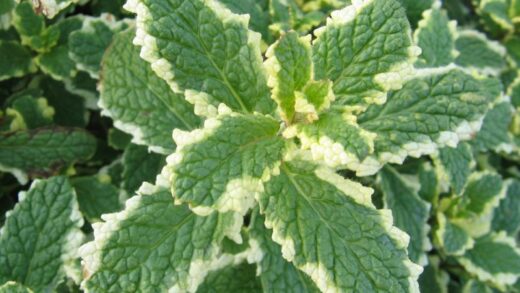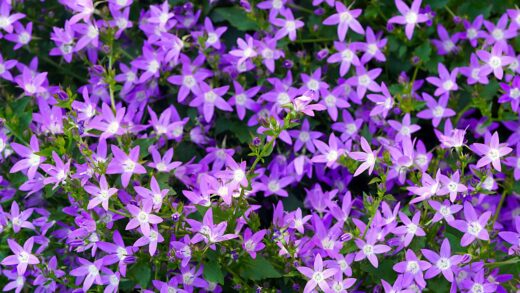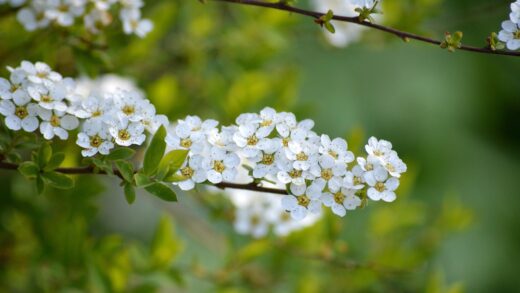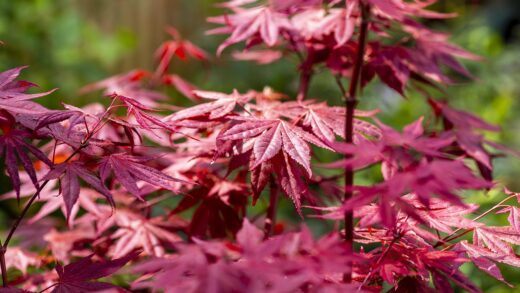Successfully planting and propagating regal pelargoniums is a rewarding endeavor that allows gardeners to both establish these magnificent plants in their collections and multiply their stock for future seasons. The initial planting process is a critical stage that sets the foundation for a healthy and vigorous plant, requiring careful consideration of the pot, soil, and initial placement. Unlike their more common relatives, regal pelargoniums have specific needs for a well-aerated and fast-draining medium to prevent root diseases. Understanding these foundational requirements is the first step towards cultivating a plant that will thrive and produce its signature, show-stopping blooms. Propagation, on the other hand, opens up the exciting possibility of creating new plants from a single parent, a process that is surprisingly straightforward with the right technique and timing.
When you first acquire a new regal pelargonium, whether it is a small plug plant or a more established specimen, the initial planting is a crucial step. It is often best to repot the plant from its nursery container into a slightly larger pot, giving it fresh soil and room to grow. Choose a container that is only 2-5 cm wider in diameter than the previous one, as a pot that is too large can hold excessive moisture and lead to root rot. A terracotta pot is an excellent choice due to its porous nature, which helps the soil to breathe and dry out more evenly. Ensure the pot has at least one large drainage hole at the bottom.
The choice of potting medium is paramount for the long-term health of your plant. Regal pelargoniums absolutely require a substrate that offers excellent drainage. A high-quality, peat-free potting mix specifically formulated for houseplants or geraniums is a good starting point, but it should be amended to improve its structure. Incorporating about one-third part of perlite or coarse horticultural grit into the mix will create the ideal consistency. This ensures that while the soil can retain enough moisture for the plant’s needs, any excess water can drain away freely, preventing the waterlogged conditions that these plants despise and that lead to fatal root issues.
The physical act of planting should be done with a gentle hand. Begin by placing a small amount of your prepared potting mix in the bottom of the new container. Carefully remove the pelargonium from its original pot, trying to disturb the root ball as little as possible. If the roots are tightly coiled, you can gently tease them apart to encourage outward growth. Place the plant in the center of the new pot, ensuring that the top of the root ball sits about 2-3 cm below the rim. Fill the surrounding space with your potting mix, lightly firming it down to eliminate any large air pockets, and then water the plant thoroughly until water runs from the drainage holes.
After the initial planting, the placement of the pot is the final key to success. Position your newly potted regal pelargonium in a location that receives bright, but indirect, light. An east-facing aspect is often perfect, as it provides gentle morning sun without the harsh intensity of the afternoon. Avoid placing it in direct, scorching sunlight, which can scorch the leaves and stress the plant. Also, protect it from strong drafts or sudden temperature changes. For the first week or two, monitor the soil moisture carefully, but avoid overwatering as the plant acclimates to its new environment.
More articles on this topic
Propagation from stem cuttings
Propagating regal pelargoniums from stem cuttings is the most common and reliable method for creating new plants that are genetically identical to the parent. The best time to take these cuttings is during the late summer or early autumn, after the plant has finished its main flowering period. At this time, the plant’s stems are mature and semi-hardwood, which gives them the best chance of rooting successfully. Look for healthy, vigorous stems that are free from any signs of disease or pest damage. Using material from a strong parent plant will give your new cuttings the best possible start in life.
To take a cutting, you will need a clean, sharp knife or a pair of secateurs. Select a non-flowering shoot and make a clean cut just below a leaf node (the point on the stem where a leaf grows), aiming for a cutting that is approximately 10-15 cm long. Once you have your cutting, carefully remove the lower leaves, leaving just two or three at the very top. It is also wise to pinch off the soft growing tip of the cutting. This preparation is important because it reduces the amount of moisture the cutting loses through transpiration and encourages the plant’s energy to be directed towards root formation rather than foliage growth.
Once your cutting is prepared, you can choose to dip the base in a rooting hormone powder. While this step is not strictly necessary for pelargoniums, which tend to root quite readily, it can help to speed up the process and increase the success rate by stimulating root development and providing some protection against fungal rot. Tap off any excess powder so that only a light dusting remains on the bottom 1-2 cm of the stem. This small step can make a noticeable difference, particularly for novice propagators.
The final step is to plant the cutting into a suitable rooting medium. A mixture of equal parts peat-free compost and perlite or coarse sand provides the ideal balance of moisture retention and aeration. Fill a small pot or a seed tray with this mix and use a pencil or a dibber to make a hole for the cutting. Insert the cutting into the hole, ensuring the base is well-supported, and gently firm the medium around it. Water the medium lightly, and then place the pot in a warm, bright location, but out of direct sunlight. Avoid covering the cuttings with a plastic bag, as this can trap too much moisture and cause them to rot.
More articles on this topic
Caring for new cuttings
Proper aftercare is crucial for encouraging your regal pelargonium cuttings to develop a strong root system. The primary goal during the rooting phase is to provide consistent, gentle moisture without creating waterlogged conditions. The rooting medium should be kept lightly moist to the touch, but never wet. It is best to water from the bottom by placing the pot in a shallow tray of water for a few minutes, allowing the medium to draw up moisture. This method prevents disturbance to the delicate developing roots and keeps the leaves dry, which helps to prevent fungal diseases.
Patience is a key virtue when waiting for cuttings to root. The process can take anywhere from three to six weeks, depending on the variety and environmental conditions. You can check for root development by giving the cutting a very gentle tug; if you feel resistance, it is a good sign that roots have formed. Avoid the temptation to pull the cutting out of the soil to check for roots, as this can tear the new, fragile growth. Another sign of successful rooting is the appearance of new leaf growth at the top of the cutting, which indicates the plant is established enough to support itself.
Once your cuttings have developed a healthy root system and are showing signs of active new growth, they can be transplanted into their own individual pots. This is a process often referred to as “potting on.” Prepare small, 8-9 cm pots with the same well-draining potting mix you used for the initial planting of the parent plant. Carefully remove each rooted cutting from its rooting medium, keeping the new root ball as intact as possible, and plant it into its new pot. Water it in gently and place it back in a bright, protected spot to continue growing.
As the newly potted plants become established, you can gradually begin to treat them like mature regal pelargoniums. A crucial step in encouraging a bushy, well-branched plant is to pinch out the growing tip once the cutting has reached about 15 cm in height. This involves simply nipping off the top centimeter of the main stem with your fingertips. This action stimulates the plant to produce side shoots from the lower leaf nodes, resulting in a much fuller and more attractive plant with more stems available to produce flowers in the future. Continue to provide bright, indirect light and begin a very dilute feeding regimen once the plant is clearly in active growth.
Propagation from seed
While propagating from stem cuttings is the most common method, growing regal pelargoniums from seed offers an exciting opportunity to cultivate new varieties and potentially witness unique flower variations. Growing from seed is a longer process and requires more patience, but it can be a deeply rewarding experience. You can either purchase seeds from a reputable supplier or collect them from your own plants after they have flowered, provided they are not sterile F1 hybrids. If collecting your own, allow the seed pods to ripen on the plant until they are dry and brown before carefully harvesting them.
The best time to sow pelargonium seeds is in late winter or early spring, typically from January to March. This timing gives the seedlings a long growing season to mature into strong plants by the end of summer. You will need a seed tray or small pots filled with a sterile, fine-grade seed-starting compost. Lightly firm the compost and moisten it before sowing the seeds. Place the seeds on the surface of the compost, spacing them about 2-3 cm apart, and then cover them with a very thin layer of vermiculite or finely sifted compost. This light covering helps to maintain humidity around the seeds without blocking essential light.
Germination requires warmth and consistent moisture. Place the seed tray in a propagator or cover it with a clear plastic lid or bag to create a humid microclimate. The ideal temperature for germination is between 20-24 degrees Celsius. Position the tray in a location that receives bright, indirect light, but not direct sun, which could overheat the seedlings. Check the compost daily to ensure it remains moist but not waterlogged; a fine mist sprayer is the best tool for watering at this stage. Germination can be erratic, but you should start to see the first seedlings emerge within one to three weeks.
Once the seedlings have germinated and developed their first true leaves (the second pair of leaves to appear), it is time to prick them out and transplant them into individual pots. This is a delicate operation that requires a steady hand. Use a small tool, like a dibber or a pencil, to carefully lever each seedling out of the tray, holding it by a leaf to avoid damaging the fragile stem. Plant each seedling into its own 7-8 cm pot filled with a well-draining potting mix. Grow them on in a warm, bright location, watering carefully and allowing them to mature into young plants before gradually acclimatizing them to outdoor conditions.
Division of established plants
Division is a less common method of propagation for regal pelargoniums compared to taking cuttings, but it can be a useful technique for rejuvenating a large, older plant that has become woody or overcrowded in its pot. This process involves splitting a mature plant into two or more smaller sections, each with its own set of roots and stems. The ideal time to divide a regal pelargonium is in the early spring, just as it is beginning to show signs of new growth after its winter dormancy. This timing ensures that the new divisions have a full growing season ahead of them to recover and establish themselves.
To begin the process, carefully remove the entire plant from its pot. It can be helpful to gently tap the sides of the pot to loosen the root ball. Once the plant is out, lay it on its side and carefully tease away some of the old soil so you can clearly see the root structure and the main crowns of the plant. Identify natural points of division where the plant has formed distinct clumps or sections. The goal is to separate these sections while ensuring that each new piece retains a healthy portion of both roots and top growth.
Using a clean, sharp knife or by gently pulling the sections apart with your hands, separate the plant into the desired number of divisions. Be deliberate in your cuts to minimize damage to the root systems. For each new division, it is good practice to trim away any dead or damaged roots and any old, woody, or unhealthy-looking stems. This cleanup helps to encourage fresh, new growth and reduces the risk of disease. You are essentially creating smaller, more vigorous plants from the old, overgrown parent.
Once the divisions are prepared, they should be potted up immediately to prevent the roots from drying out. Use fresh, well-draining potting mix and select pots that are appropriately sized for each new division—the pot should be just large enough to comfortably accommodate the root system. Plant each division at the same depth it was previously growing and water it in thoroughly. Treat these new plants as you would a newly potted specimen, keeping them in a bright, protected location and watering carefully until they show clear signs of new growth and establishment.















